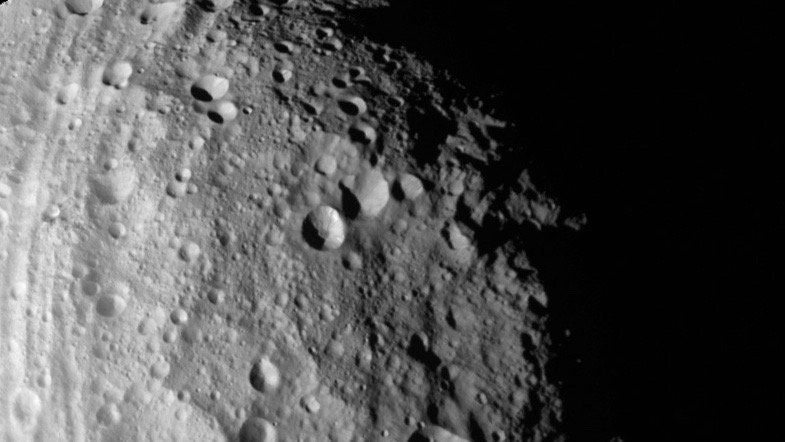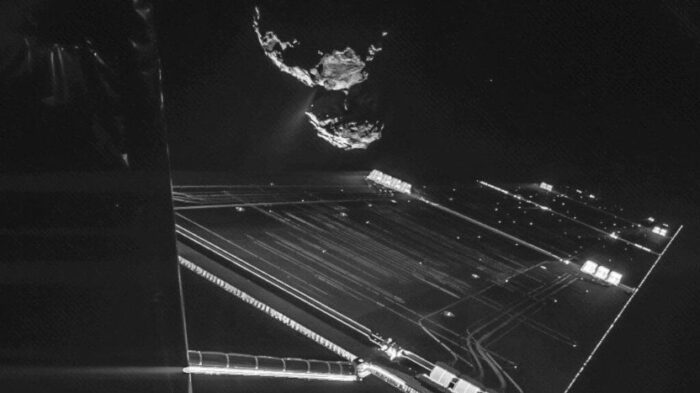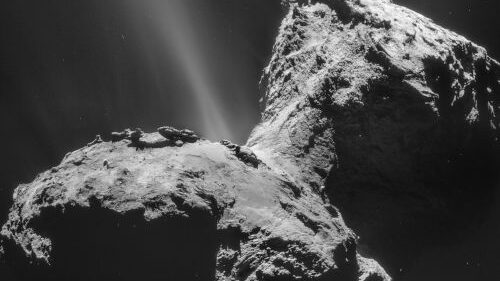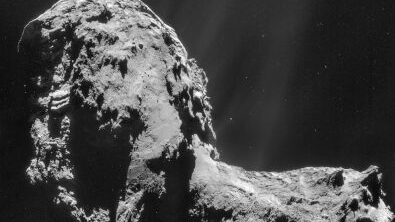Rosetta’s epic comet encounter was the first spacecraft ever to orbit a comet. It launched March 2004, visited two other asteroids along the way and finally arrived at the object named 67P/Churyumov-Gerasimenko after ten years of space travel. It landed on the surface of the comet in 2016 and has been there ever since.
Where is Rosetta now? Comet 67P/Churyumov-Gerasimenko?
Space in 3D Web App
67P/Churyumov-Gerasimenko is currently --,--- from the sun, and --,--- from us. When it zipped past the sun at it’s closest distance it had a speed of 123,186 km/h.
As the Rosetta spacecraft is swinging back out toward Jupiter it slowed down and being farther from the sun it’s solar panels struggled to keep up with the power demands of the space probe.
Since midnight last night 67P/Churyumov-Gerasimenko got --,--- --,--- us. Since you started looking at this page it is --,--- --,---.
Scientists decided to crash land the probe on the surface of the comet, and gather scientific data in the process. The last photo was taken about 20 metres prior to the hard landing on the surface of the comet 67P/Churyumov-Gerasimenko.
The spacecraft Rosetta carried a lander with it called Philae. This failed to land successfully on the comet and ended up on it’s side, meaning the solar panels were not facing the sun. Effectively this meant the spacecraft was lost although about two days of science were conducted until the battery ran out.
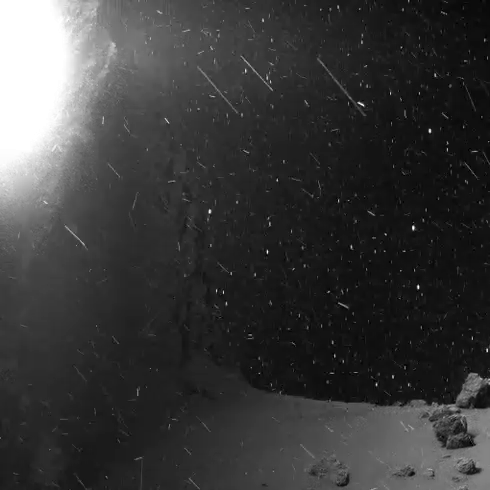
The size of 67P/Churyumov-Gerasimenko is 4 km (2.5 mi).
On it’s way to 67P/Churyumov-Gerasimenko , Rosetta flew by asteroid 2867 Steins and asteroid 21 Lutetia.
*This Interactive 3D Simulation is built on data provided by NASA JPL HORIZONS database for solar system objects and International Astronomical Union’s Minor Planet Center. Distances and speeds are estimates based on this data.
Photo Credit and other: NASA, ESO/S. Brunier, NASA/JHUAPL/SwRI, NASA/JPL-Caltech, JAXA, University of Tokyo & collaborators, UH/IA, Solar System Scope/INOVE CC BY 4.0, Wikipedia/Creative Commons Attribution-ShareAlike License, icons8.com, Péter Eke, NASA/Goddard/University of Arizona/Roman Tkachenko, Wikimedia Commons, Hayabusa 2 Arrival illustration by Akihiro Ikeshita (permission granted), oNline Web Fonts, Font Awesome, Galaxy vector created by stories – www.freepik.com

